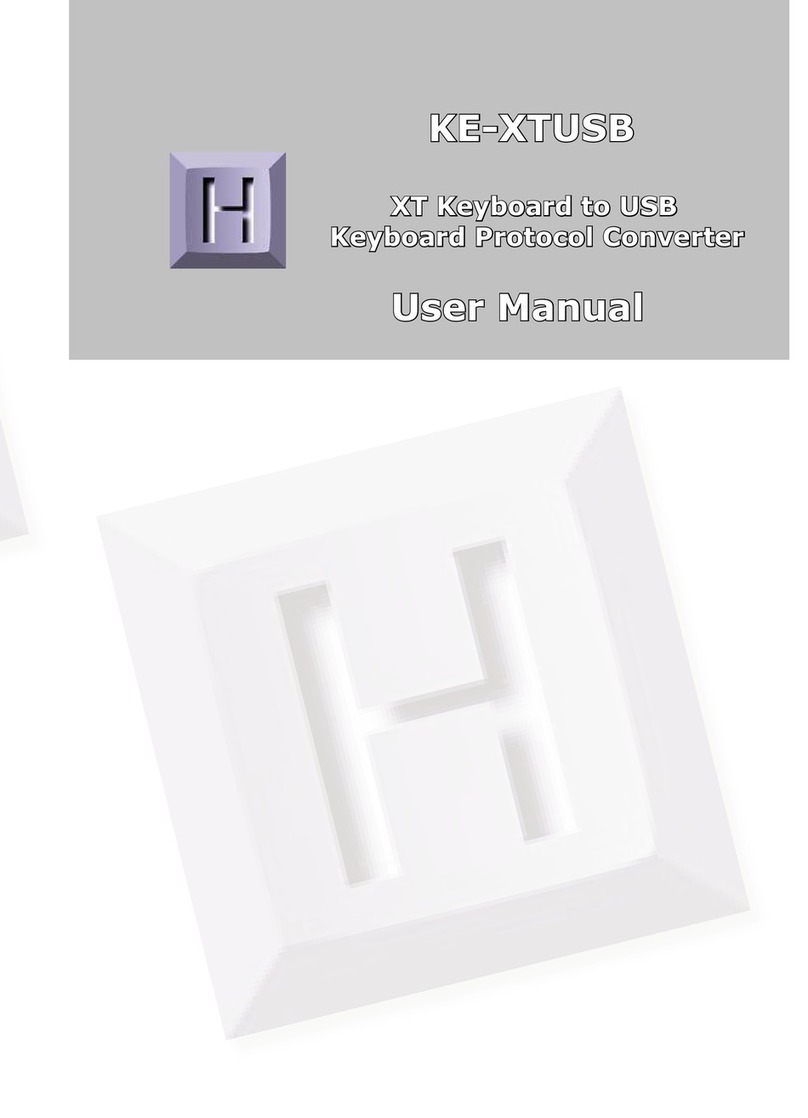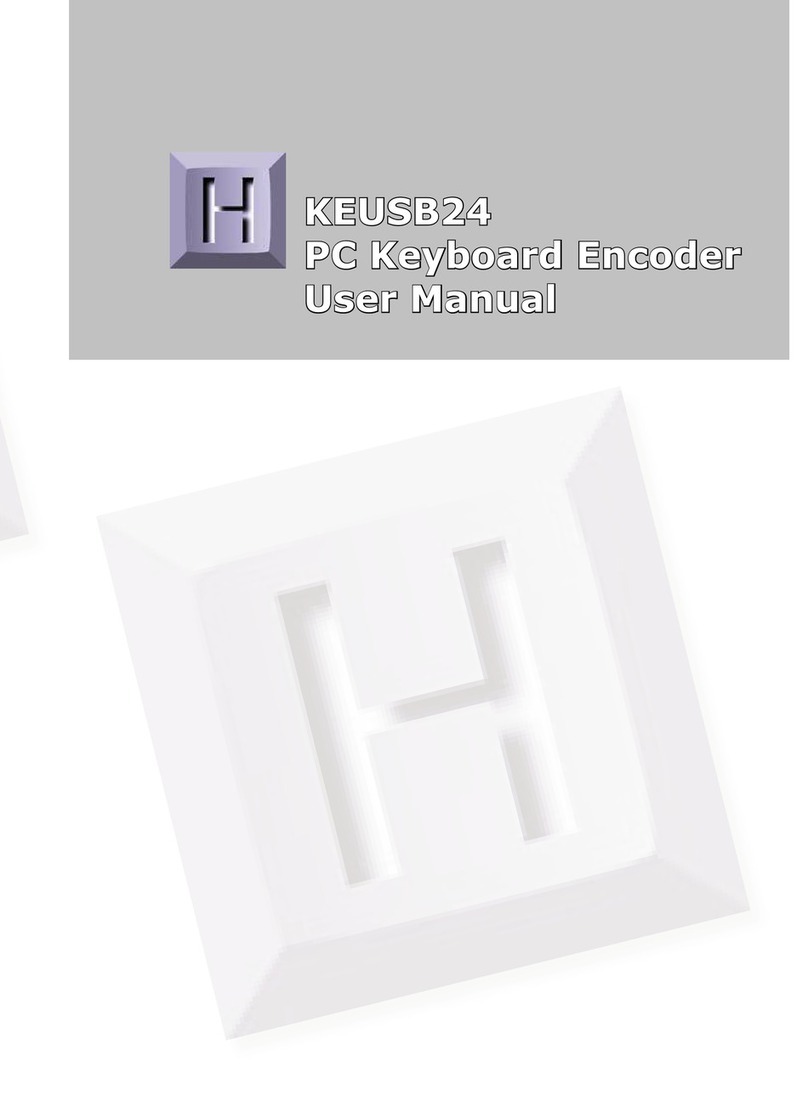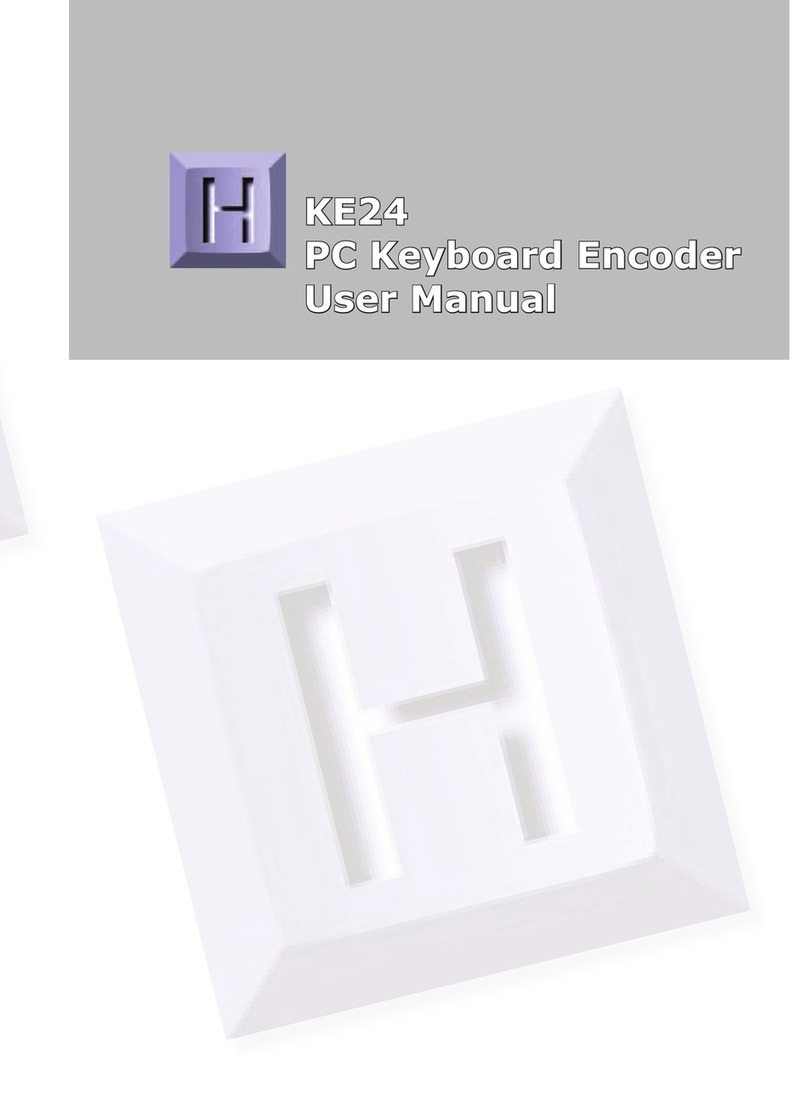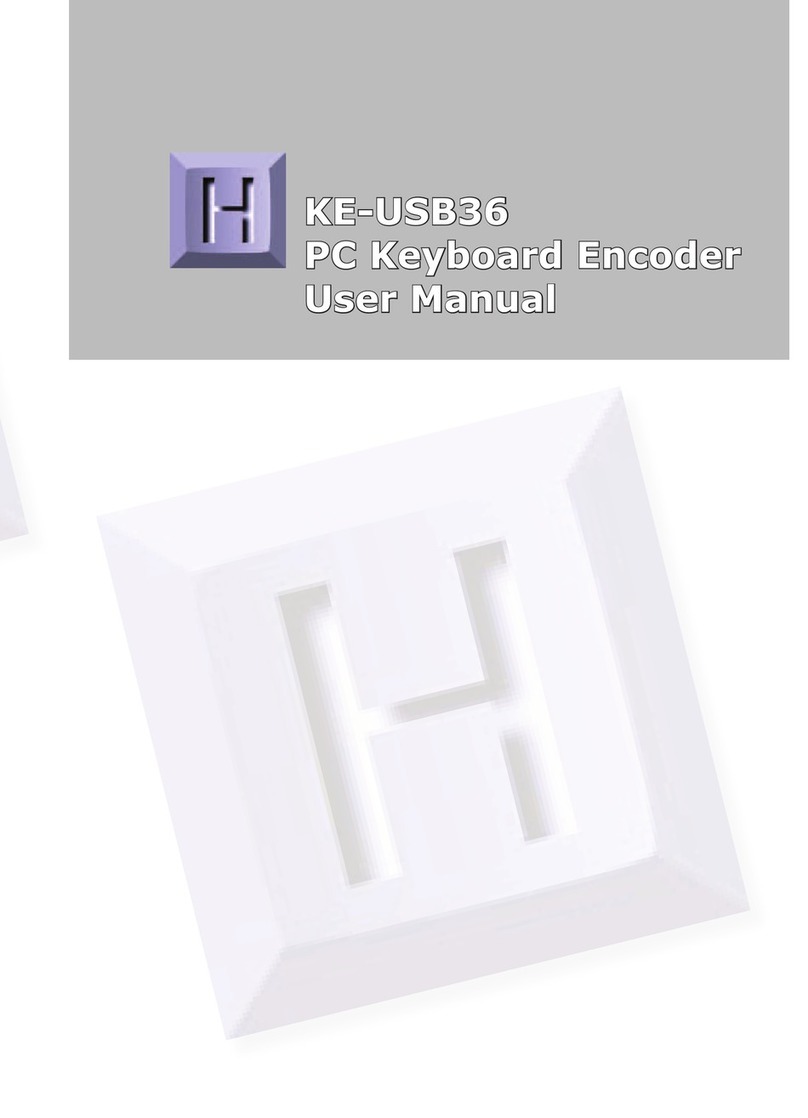Interfacing to the KE-USB36FS Input Header
The KE-USB36FS features a 2x20 header for interface to your input
devices. The input header is arranged with grounds on the end
pins of the header, and the 36 inputs between them. The board
is labeled near each header pin, designating the input number
that the pin represents. Each of the pins may be programmed
to emulate any key on a standard keyboard as well as the Left,
Middle, and Right mouse buttons.
Inputs on the KE-USB36FS header are activated by shorting them
to one of the
provided logic
grounds on the
header. When
activated, the
input will report the keystroke that it has been programmed to
emulate. If held active, the keystroke will repeat (if programmed
to repeat), based on the repeat rates and delays set within the
computer’s operating system.
The inputs are intended to handle mechanical switch inputs and
are debounced for that purpose. Logic drivers may be attached
to the inputs as well, provided they are an active low, logic level
signal. Refer to the Appendix A on specifications for the timing of
logic signals. Never attach any external power to the Inputs.
The KE-USB36FS input header is a dual row header with .100”
spaced pins. This format is suitable for many readily available
connectors on the market, including a typical IDE hard drive cable.
Since all the inputs require the same logic ground reference, the
ground may be “daisy chained” to the common of all the switches.
We also offer a breakout board (our part number IOX36) for
interfacing to the KE-USB36FS. This interface board attaches to
the KE-USB36FS header through an IDE cable (provided with the
IOX36). See the Accessories page of this manual for details on
the IOX36. Appendix B demonstrates connection techniques for
Figure 4 - The KE-USB36FS Input Header
a Trackball. Use the controls for either the X or Y axis for the
Spinner, according to the axis on which the Spinner movement is
to appear.
In order to accommodate the various brands of Trackballs, the
KE-USB36FS provides check boxes to reverse the Left-Right and
Up-Down movements of the Trackball. If you find that one or both
directions of your cursor movement from the Trackball are reversed,
check the appropriate box in the configuration program.
The KE-USB36FS uses the standard USB keyboard buffer length
which allows for up to six keys being reported “ON” at the same
time. This limitation only pertains to KE-USB36FS inputs that are
programmed with the repeat selection enabled. Use of the Left and
Right Shift, Left and Right Alt, Left and Right Control, and Windows
GUI keys, can be used in addition to the six key limitation.
The KE-USB36FS has the option of repeating an input that is held
on. If the input is selected to repeat, that input will count toward
the six key limit. Keys that are set to not produce a repeat will not
be subject to the 6 key limitation, provided there are no more
than 5 repeated keys currently active. Note that inputs defined as
mouse buttons do not figure into the six key limit.
Inputs on the KE-USB36FS which emulate a multiple key sequence,
such as Shift+F1, will automatically have repeat disabled.
Appendix C:
KE-USB36FS Read/Write from the Command Line
In addition to the KEUSB36FS.EXE configuration program, the
disk supplied with the KE-USB36FS contains two command line
programs for reading from and writing to the KE-USB36FS device.
For details, see the README.TXT file included on the disk.
196


































